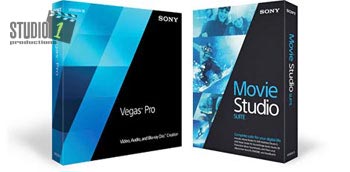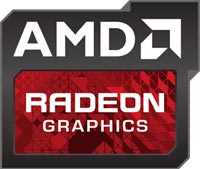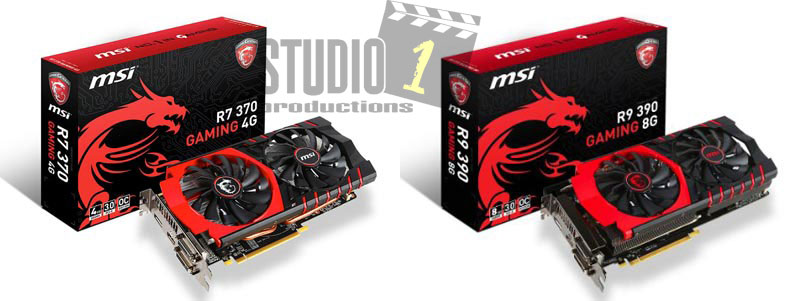

Article Updated on 12/08/2015
Copyright 2018, Studio 1 Productions
Written by David Knarr of Studio 1 Productions
When Sony first implemented GPU acceleration, the current line of video cards were the NVIDIA GT/GTX500, GT/GTX400 and
GT/GTX200. Also, included are the AMD HD 4000, HD 5000 and HD 6000 video cards. A lot has changed since these video cards were around
and the newer modern video cards give totally different results than these older video cards.
We have found a lot of good information on forums that deal with Vegas Pro and Vegas Movie Studio, however, there is still a lot of misinformation
on other forums. As people are giving out advise based on the older video cards, expecting it to apply to the video cards we have today.
So the purpose of this article to help clear up this misinformation,
Vegas Pro and Vegas Movie Studio are based on using OpenCL. While both AMD and NVIDIA offer OpenCL support. AMD has put a lot of
effort into their implementation of OpenCL, which is why AMD video cards perform exceptionally well with Vegas Pro and Vegas Movie Studio, along
with other programs that use OpenCL. Even OpenCL benchmark programs have shown AMD cards will out perform NVIDIA video card in OpenCL
tests. (Please note, I am talking about OpenCL and not OpenGL)
Since NVIDIA is pushing their proprietary CUDA technology, they don’t put a whole lot of effort into OpenCL. It is not implemented well
and it really shows when it comes to Vegas Pro and Vegas Movie Studio.
While I am not saying you can’t use NVIDIA video cards, you can, but the performance will not be anywhere near what you get with an AMD video
card. I will show you some examples later in this article.
Now Sony says you can use NVIDIA video cards and use CUDA acceleration, however, that is only with the older GTX200, GTX400
and GTX500 series of NVIDA video cards and for the MainConcept AVC encoder. The newer GTX600, GTX700, GTX900 series are not supported for
CUDA acceleration with the MainConcept AVC encoder. This is where a lot of misinformation comes in as a lot of people are unaware of
this. We will cover this later in this article.
Timeline rendering how this affects your rendering when you export your video.
Vegas Pro and Vegas Movie Studio use OpenCL for timeline playback and Sony’s GPU accelerated effects. It doesn't matter if you have
an AMD or NVIDIA graphics card, it is still using OpenCL. Even if you have no video card selected under the Options/Preference/Video,
the CPU will be using OpenCL for the timeline playback and Sony's GPU accelerated effects.
When you render out your video to export it (Render As), it must playback the timeline in order to hand the frames to the encoder for the
final render or export of the video. So your playback performance has an affect on both the timeline and the rendering or
exporting of the video.
Here is an example of how playback of the timeline affects the rendering of your video. Let’s say your playback of the timeline is only 5 fps
in Best/Full quality with your video card‘s GPU selected in Vegas Pro or Movie Studio then your render speed will never be faster than 5
fps. So if you have a 5 minute video that you are rendering, you can pretty much expect it to take 25 minutes to render simply because your
video card’s GPU can’t achieve more than a 5 fps playback speed.
However, if your timeline playback is 29.97 fps in Best/Full quality with the video card’s GPU selected, then you just also increased your render
speed to 29.97 fps. So you can see that increasing your playback rate definitely helps speed up your output rendering speed. In addition,
the render rate could be much more than 29.97, since it is not limited by the media frame rate. So, you could achieve a much higher fps
during the render.
Using this test system which has a AMD FX-6300 CPU with 16 gigs of RAM we ran the following tests with footage from a Canon 60D camera. We
used the latest drivers that were available on Dec. 1, 2015.
In the first test, we found an AMD R7 370 video card gave us a 29.97 fps playback on the timeline and the GTX 970 video card only gave us a 19
fps playback on the timeline with the footage we were using. (fps = frames per second)
In the second test, we found an AMD R9 380 and a NVIDIA GTX-980. The AMD R9 380 gave us a 29.97 fps on the timeline playback, while the NVIDIA
GTX-980 only gave us a 21 fps playback on the timeline with the footage we were using.
Now, please don't get me wrong I am not knocking NVIDIA video cards, it's just that with Vegas Pro and Vegas Movie Studio modern AMD video
cards will give you a much better performance over modern NVIDIA video cards.
We are not the only ones to see this, as countless others on the various Sony Forums are reporting much better results with AMD video cards over
NVIDIA cards they have tried.
NOTE 1: Depending on your footage, your video card and the complexity of the timeline, your results will vary. However, you will
always get the best results when you use an AMD video card.
NOTE 2: The AMD R7 370 runs approx. $150 US, while the NVIDIA GTX-970 runs approx. $330 US.
NOTE 3: According to Sony, both Vegas Pro and Vegas Movie Studio only support using one GPU. Vegas Pro and Vegas Movie
Studio do not support CrossFire or SLI. It was reported to me that Vegas Pro will use two video cards. They are using two AMD R9
290's. However, they reported the difference using two video cards only gave them about a 10% boost in performance. So this may not
be enough of a gain for most people to spend the extra money on a second video card. This applies to both desktop video cards and
workstation video cards.
Here is how you set both Vegas Pro and Vegas Movie Studio to use the GPU for playback of the timeline:
1.
Go to Options/Preference/Video.
2. Look for the line “GPU acceleration of video processing”
3. Change if from OFF to the name of your video card.
This sets Vegas
Pro and Movie Studio to use the video card's GPU during playback.
GPU acceleration when Render to Export your Videos.
Vegas Pro and Vegas Movie Studio offer two encoders that have the options to use the GPU, the Sony AVC and the Main Concept AVC encoders. However,
here is a quote
from a page I found on Sony’s website:
“GPU-accelerated AVC rendering (for exporting your video) is not enabled by default. We have found that enabling
it isn’t always faster, can reduce stability in certain systems, can produce lower-quality output, and isn’t supported on all hardware.
GPU-accelerated AVC rendering is available for those users who find benefit in it, but it is no longer recommended for general use.”
The reason they are not recommending it with the AVC encoders is, MainConcept only supports GPU rendering with old video
cards (as you will read about below) and the Sony AVC encoder doesn’t really use the GPU that much, as you will also read about below.
We have found that when we used the Sony AVC encoder and selected it to use OpenCL in the encoder, we got the just about the same render
times whether we used the GPU or CPU to encode with. Please note, we had under Options/Preference/Video the GPU set to use our video card
so the timeline would be GPU accelerated, which helps greatly with the render / export times as we explained above.
A few people have reported that when they render / export their video using the Sony AVC encoder with the GPU set to use OpenCL, that it was
actually a little slower than when they only used the CPU.
So this is why Sony said in the statement above, “We have found that enabling it isn’t always faster”, as it may not be for the Sony AVC encoder.
The MainConcept AVC Encoder
MainConcept AVC is the one encoder that supports CUDA with NVIDIA video cards. However, the MainConcept encoder only supports
old graphic cards for GPU acceleration.
To use CUDA with the MainConcept AVC encoder you can only use a GT/GTX200, GT/GTX400 and GT/GTX500 series of video cards.
To use OpenCL with the MainConcept AVC encoder you can only use the AMD/ATI HD 4000, HD 5000 and HD 6000 series of video cards.
Otherwise, when using the MainConcept AVC encoder, it will run using the CPU only. Which actually isn't a bad thing as the video quality
is much better when you set the MainConcept AVC encoder to CPU.
If you want one of these older video cards, you can still find them on ebay.
For some reason, MainConcept hard coded the list of video cards into the MainConcept code. Why they would hardcode the list of video cards
into the MainConcept AVC encoder is beyond me. Since they have done that, it effectively blocks all newer video cards such as the NVIDIA
GT/GTX600, GT/GTX700, GT/GTX900 and AMD HD 7000, R7 and R9 series of video cards from having GPU acceleration when using the MainConcept AVC encoder.
Even if you select the MainConcept AVC encoder to use OpenCL or CUDA with a modern video card, it will fall back to using
the CPU. I do want to point out that trying to use the OpenCL or CUDA on a modern video, you may cause your system to crash
or for you to experience other strange problems. Again, this is due to MainConcept hard coding the list of video cards it will work with
under CUDA and OpenCL.
Also, the MainConcept CUDA encoder is completely different from the MainConcept CPU encoder. Since they are two different encoders, you
will see a quality difference between the two, especially at lower bit rates. The GPU encoder is not as good as the CPU encoder, at
lower bit rates.
In addition, if you set the bit rates exactly the same between the two encoders, you will end up with two different file sizes and there can
be a noticeable quality difference, again especially with low bit rates.
Just remember to keep the timelime playback set to your video card under Options/Preference/Video, as this helps with the speed for rendering
out the final video.
NOTE: The MainConcept AVC encoder produces excellent .mp4 video for uploading to YouTube when in the CPU mode.
Sony AVC Encoder
When it comes to using the Sony AVC encoder when you render to export your video, we found it is best to set it to use the CPU as we didn't see
any speed difference whether we had it set for GPU or CPU.
With that said, some people who used the Sony AVC encoder with OpenCL said the did shave a few seconds off of their render time. So
this is something you might want to test on your system, with the type of footage you are using.
Here are the results of a test I did with a NVIDIA GTX780 video card and a AMD R9-280. Both using the Sony AVC encoder and the same timeline:
NVIDIA GTX780 results:
Using the Sony AVC encoder set to CPU the render time was 8.5 minutes
Using the Sony AVC encoder set to OpenCL GPU, the render time was 10 minutes.
AMD R9-280 results:
Using the Sony AVC encoder set to CPU the render time was 5 minutes
Using the Sony AVC encoder set to OpenCL GPU, the render time was 5 minutes.
As you can see, with the NVIDIA GTX-780, I actually got a faster render time when I turned off the OpenCL GPU option in the Sony AVC encoder.
With the AMD R9-280, you can see that the AMD card gave me the same results whether or not I had the Sony AVC encoder set to use the CPU or the
GPU. Also, it gave me a better overall render time coming it a 5 minutes vs. 8.5 minutes for the NVIDIA card. This is due to the fact the AMD
card gave me a much better fps playback on the timeline over the NVIDIA card.
NOTE: I did have a couple of people tell me that when they set the Sony AVC encoder to use OpenCL, it actually took
longer to render out their videos.
Older Video Cards
So we have talked about the newer video cards, but what about the older NVIDIA GT/GTX-200, GT/GTX-400, GT/GTX-500 video cards and the AMD HD
4000, HD 5000 and HD 6000 video cards.
Obviously, these video cards will give you faster render for export times with the MainConcept AVC encoder, since the encoder was written
specifically for these video cards. The only problem using these older video cards is with the video drivers and whether the old video
drivers for these video cards will work with the newer Windows 10. NVIDIA made some changes to the video drivers and now the older video
cards will not work with any video driver newer than version 341.74. Another problem is stability with the older drivers and Vegas Pro and
Vegas Movie Studio.
We had problems with different NVIDIA drivers with Vegas Pro 12. Certain video drivers cause frequent crashes in Vegas Pro 12.
We finally switched over to using AMD video cards and have not had any problems since.
So, if you decide to go with an older video card, just be warned about compatibility problems.
Third Party Plug-ins
Some 3rd party plug-ins will use OpenGL and not OpenCL. These effects can be quite intense and simply won't playback in real time no matter
what you do.
However, with a 3rd party plug-in that does supports OpenCL, you will find these plug-ins will give you a better playback.
Sony has done an excellent job of GPU accelerating their built-in effects. In particular, Color Correction. Now that it is GPU accelerated
you can achieve smooth playback even with a full chain of color correction plug-ins.

Choosing a Video Card
So as you can see by now the AMD video cards will give you much better performance with Vegas Pro and Vegas Movie Studio than the NVIDIA video
cards.
With that said, when selecting a video card, you will need to take into consideration all of the other programs you have
that will use the video card’s GPU.
For example, Adobe Premiere uses CUDA, which is available only on NVIDIA video cards. I want to point out that Adobe Premiere since
version CS6 also uses Open CL. However, it has been reported that OpenCL isn’t as fast in Adobe Premiere.
When you buy a video card you want to keep a balanced system. Make sure your CPU is going to be powerful enough to keep up with the GPU.
And if you have a high end CPU don’t buy a low end video card or you will find the video card can’t keep up with the CPU.
The latest AMD R7 370 and the AMD R9 series work well with Vegas Pro and Vegas Movie Studio. I don’t recommend going any lower than a R7
260 video card as you may not get the performance you need from the lower end cards.
Currently the R9 series is the fastest video cards for the timeline preview. They are also very fast when rendering with codes like MPEG-2,
XDCAM, MPEG for Blu Ray, etc.
In our one system, we have the AMD FX-6300 CPU, with 16 gigs of ram and the AMD R7 370 video card and we are very happy with the performance we
are getting. In another system, we have the AMD FX-8350, with 16 gigs of ram and the AMD R9 380 video card. We ran all of our tests with
Vegas Pro 12 and Vegas Movie Studio 12.
Don't forget, the GPU Acceleration under Options/Preferences/Video affects your timeline playback and ALL renders will greatly
benefit from this being ON no matter if the encoder uses the GPU for encoding or not.
I hope this article helps to clear things up with Vegas Pro and Vegas Movie Studio using the video card’s GPU.
One Last Note:
Sony needs to update the specs for the video cards on their website as they are misleading. So don’t go by what they have listed
on their site.